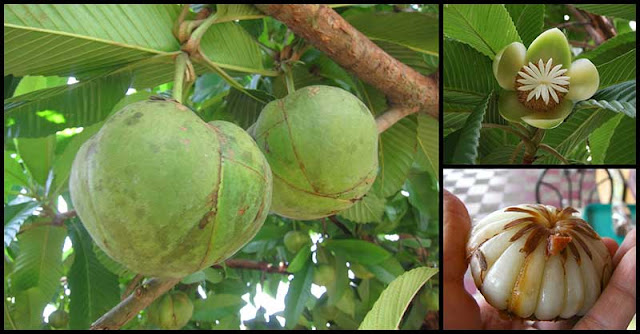Katmon (Dilleniaphilippinensis) is small to a medium-sized evergreen tree which is common in forests at low and medium altitudes but does not survive in cold climates of uplands. Its trunk is erect and has smooth bark and the leaves are leathery, shiny, rounded at the base.
This native plant to the Philippines can be found in Babuyan Islands, Luzon, Mindoro, Cebu, Polillo, Masbate, Guimaras, Basilan, Leyte, and Negros. It bears large, white, snowy flowers and about 15 centimeters in diameter with reddish pistils and stamens and five pale green cup-shaped sepals.
Katmon has edible round fruits with fleshy sepals tightly enclosing the true fruit. The fruit which is also known as elephant apple is quite fleshy, eaten when green and taste similar to green sour apples. It is refreshing when eaten due to its acidity and juiciness.
Known Traditional Uses Of Katmon
Katmon possesses certain medicinal properties that have been used to help handle various health issues. Check out below some of its medicinal uses.
- A cough syrup can be made from the fleshy sepals of the fruit.
- Its leaves and bark have astringent, laxative, and anti-inflammatory effects.
- It helps in healing wounds and lowering down swelling. Simply apply a paste of its pounded young leaves or stem bark.
- Its fruit pulp is used for cleansing and washing hair as well as for treating hair fall and dandruff.
- Air-dried leaves of katmon yield betulinic acid. Betulinic acid is known for its antiretroviral, antimalarial, and anti-inflammatory properties.
- Its fruit decoction is traditionally used to provide relief from abdominal pains and chest pains.
- Take the juice of its leaves and bark for treating diarrhea.
- A decoction of the leaves is usually administered to treat headaches, fever, and dysentery.
- Studies show that the extract from the fruit has anti-leukemia and anti-oxidant properties.
Known Ways Of Consuming Katmon
- Simply consume its ripe fruits.
- We can use its young shoots, flower, and fruits as a flavouring in various dishes such as sour fish soup.
- Cook its fruits as vegetables.
- Use ripe fruits in preparing jams and sauces.









